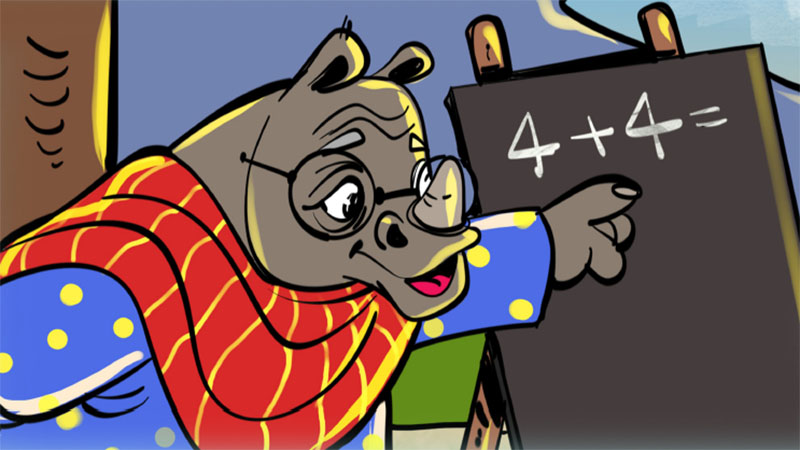A group of women and men cluster around a table, peering at an illustration on a digital drawing tablet held up by artist Anil Kumar. The illustration depicts a young girl showing her mother a school certificate. One of the women looks closely at the illustration before making a comment. “The girl should be holding a trophy,” she says. The others agree – a trophy is a better symbol for school achievement than a certificate alone. The artist begins sketching a trophy into the girl’s other hand. The group nods their approval of the change.
The scene above was one of many such moments observed by the Operation Eyesight team during a recent community workshop in the city of Udhampur in northern India. The goal of the workshop was to get input on some new educational materials from members of the communities where they will be used.
The illustration described above is from a series of flash cards that tell the story of a mother with vision problems who doesn’t understand why her daughter has received an award at school because she can’t read the writing on the certificate. The story is meant to jumpstart conversations about why women in the region are often hesitant to seek out eye health care.
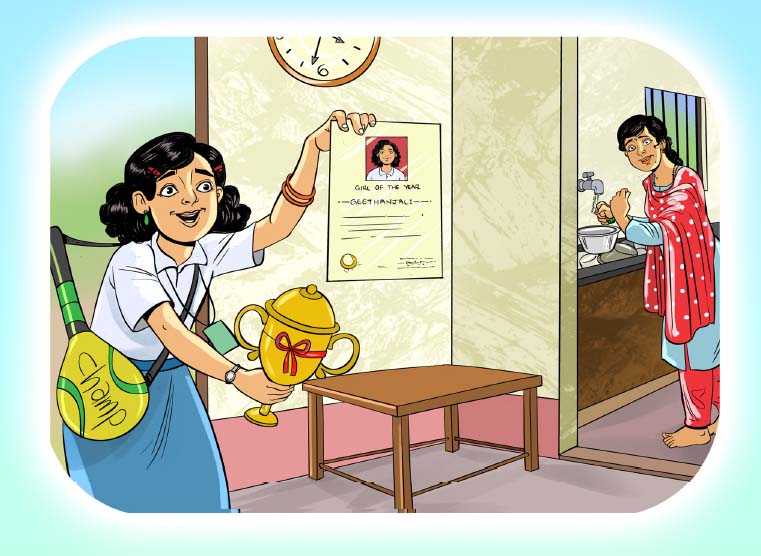
Over two days, eight community members from several villages in our project area worked with an Operation Eyesight team that included an artist, a writer, a gender equality specialist and several of our program managers.
“It’s important to note that the community was the driver for these materials,” says Dr. Troy Cunningham, our Country Director for India. “Our experts took the backseat. The images were decided by the community members, the stories were decided by them. Even before the artist and writer sat down with the community, we took them around the villages to meet people with eye problems.”
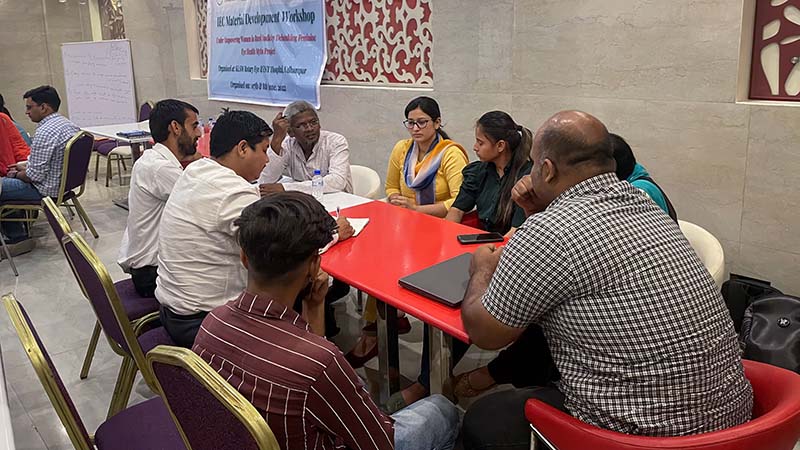
The new educational materials are just one small part of a larger eye health project we are undertaking in the region. Called “Empowering Women in Rural India by Debunking Feminine Eye Health Myths,” the project was launched in 2022 in partnership with the nearby Rotary Eye and ENT Hospital in Udhampur, and Edmonton’s NorQuest College. The project is being funded by the Inter-Council Network’s FIT program, which stands for “The Fund for Innovation and Transformation”. The program is designed to support Canadian organizations so they can test innovative solutions for advancing gender equality in the Global South, and is funded by Global Affairs Canada.
The Udhampur Block stretches over miles of hilly Himalayan terrain in India’s Union Territory of Jammu and Kashmir. Roads connecting the region’s villages are prone to flooding and landslides. For many, it’s difficult to leave the village to seek any kind of health care, so vision problems often go ignored, especially for women and girls.
What’s more is that there are a number of gender-related eye health myths that also create barriers to seeking medical care. As a result, our team designed a custom project for the region, which includes sending a four-wheel drive mobile vision clinic staffed with an all-female healthcare team into the area. We have also trained local women as community health workers. These health workers use the new educational materials in their daily work.
Here is a snapshot of some of the new materials that our team and the community members have developed.
Jhanoo’s Cataract
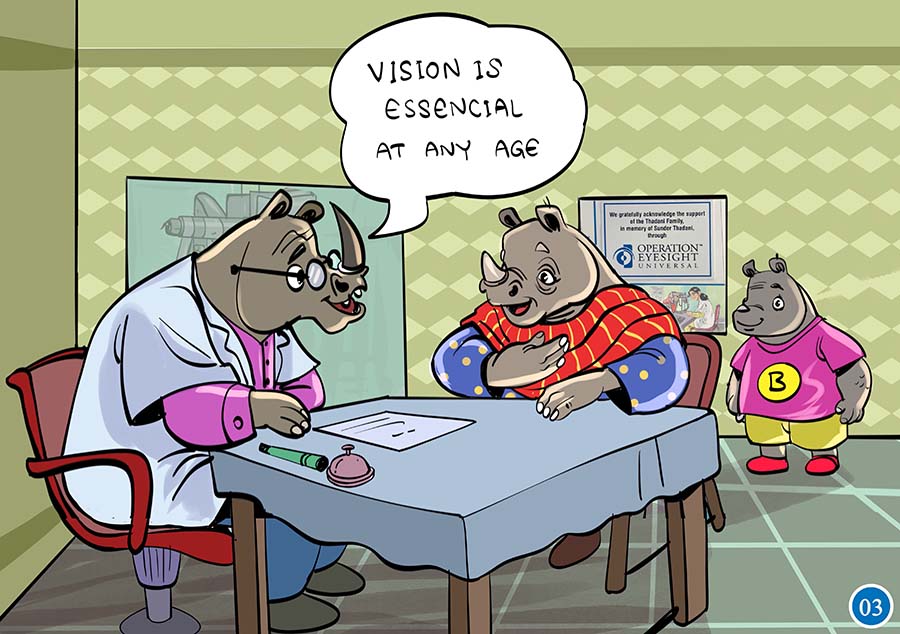
Jhanoo is the oldest rhinoceros in her clan. She can’t see well because of her cataracts, but she thinks that she is too old to have them treated. The youngest member of the clan, Banoo, convinces her that she should see the local community health worker. After the visit with the health worker, Jhanoo agrees to get cataract surgery, and after the operation she enjoys a more independent lifestyle. She also gets back to a key role she plays in her community – teaching math to the local children.
This story is designed to ease fears of surgery and show the community how important eye health is to even its oldest members. It is presented to the community participants as a series of flash cards that they put in order to tell the story.
Cunningham says that, initially, his team was concerned that the community members would be offended by the artist’s use of animals to depict people, but they decided to wait and see what feedback they would receive at the workshop in Udhampur. To the team’s surprise, the community members loved the rhinos and told the artist to stick with the theme.
Rani’s Story
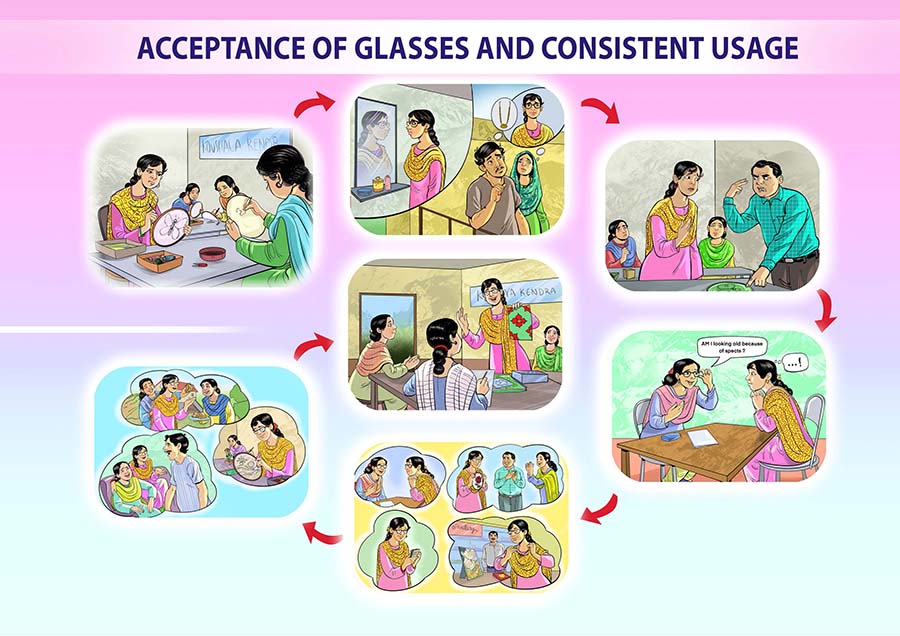
Rani is an embroidery artist. She has a pair of eyeglasses, but she doesn’t wear them because her parents worry they will affect her chances of finding a good life partner. As a result, she makes a lot of errors in her work and her supervisor is unhappy with her. She speaks to a friend who convinces her to wear her glasses more often. Her work improves and she gets a promotion.
This story, shared through a poster, is aimed at getting more young women to seek treatment for vision problems and to wear their eyeglasses. It’s meant to combat the stereotypes that prevent many women from addressing their vision problems.
Next Steps
For the past few months, community health workers in the Udhampur region have been piloting these new materials as they conduct surveys and workshops throughout the project area. Along the way, the team has been continuing to tweak and update the materials to make sure they best serve the communities.
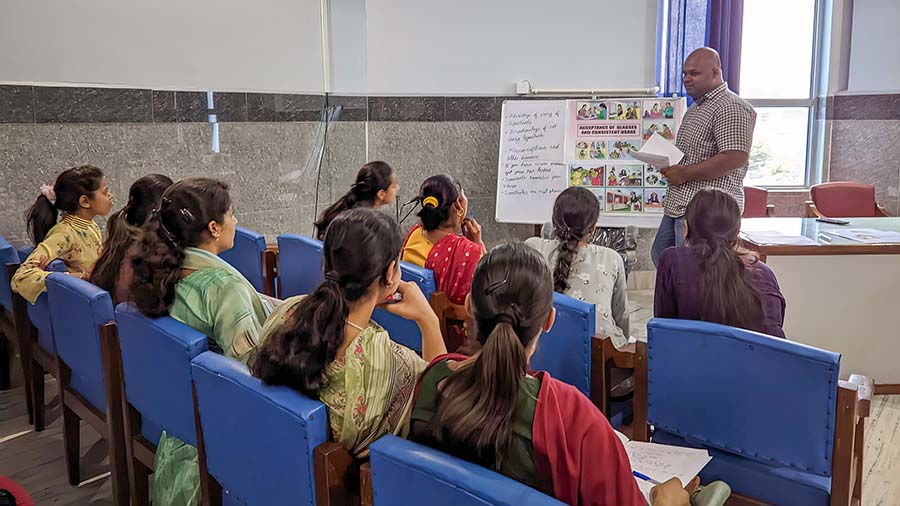
Project Manager Tapobrat Bhuyan says the materials are important tools for understanding the issues in each village.
“They can explore the main concepts and myths through the stories told in the materials,” he says. “All the materials come with a session guide, and there are some excellent questions in the guide that help them to understand the problems in the community.”
The project is just one more way we are working towards the United Nations’ Sustainable Development Goals (SDGs), particularly SDG number five, Gender Equality.


